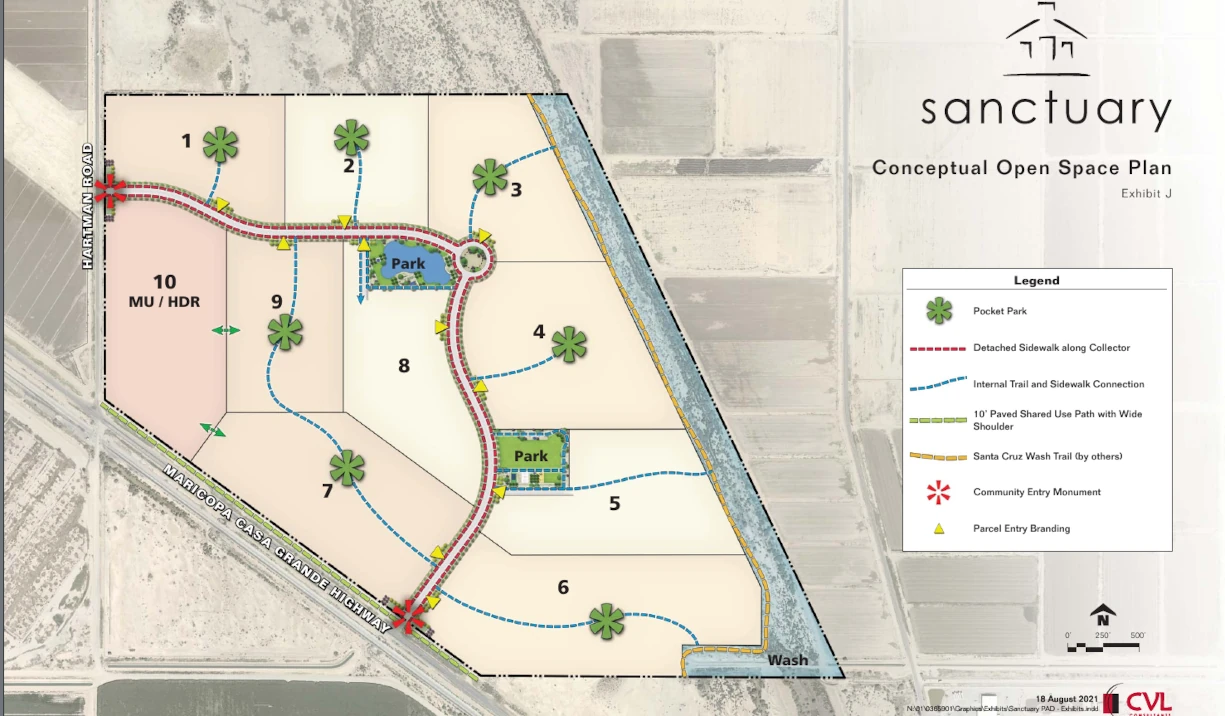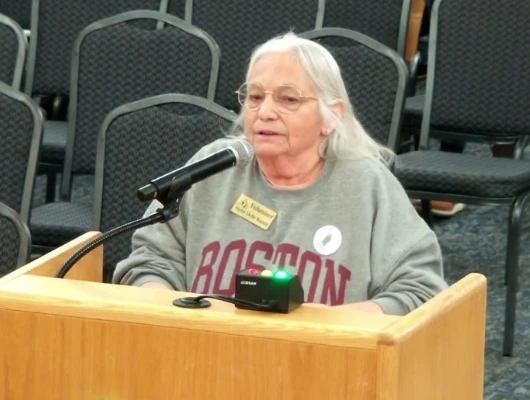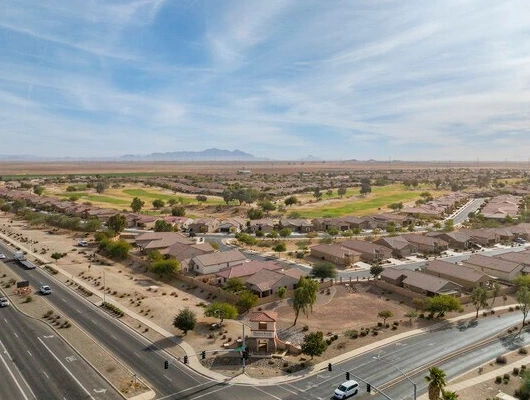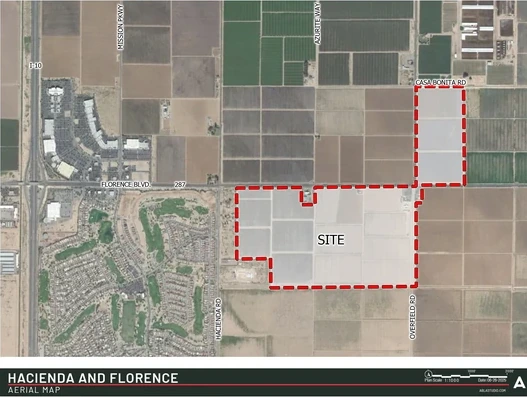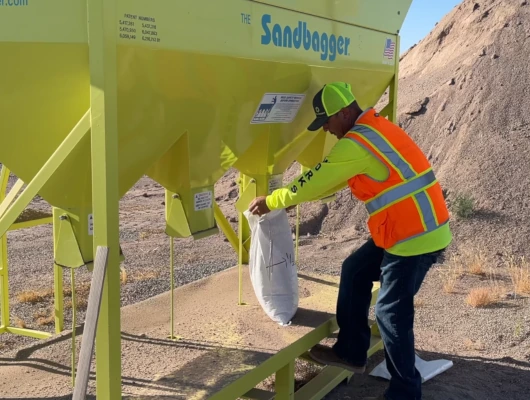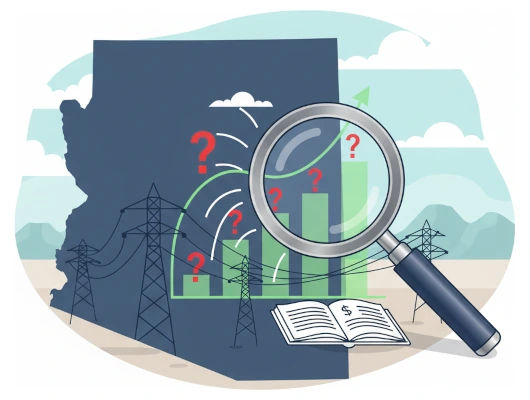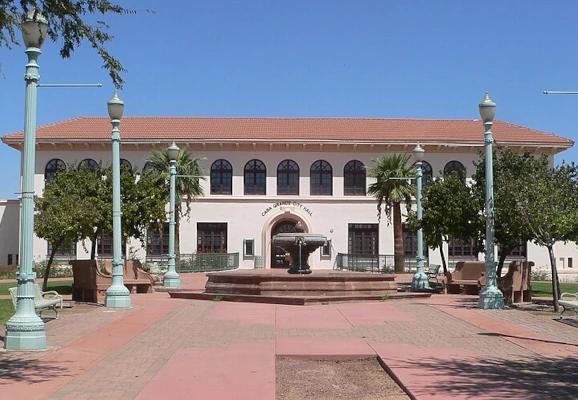City engineer addresses safety concerns about emergency access following June tabling
The Maricopa Planning and Zoning Commission approved The Sanctuary Phase One subdivision on June 23, 2025, following a complex voting process that included an initial 3-3 tie vote, an executive session to discuss access concerns, and a subsequent unanimous approval. The project will create 339 single-family homes on approximately 83.02 acres at the northeast corner of West Maricopa-Casa Grande Highway and North Hartman Road. When fully built out across all phases, the complete Sanctuary development will include up to 1,191 residential units.
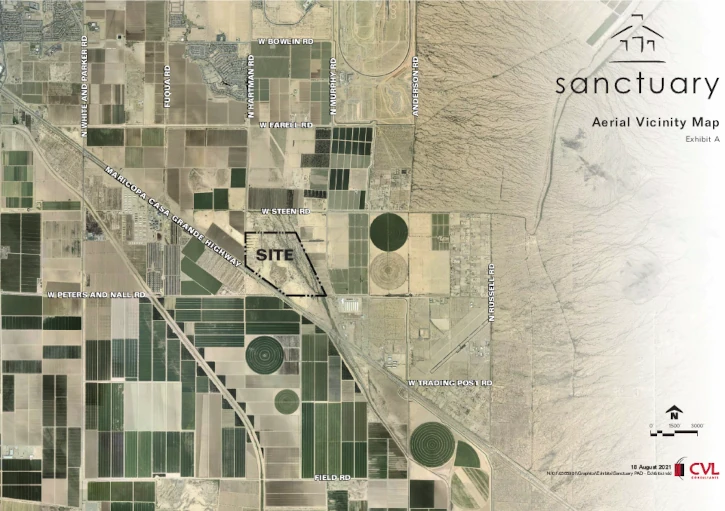
Development Details and Voting Process
CVL Consultants, representing Maricopa Hartman LLLP, requested approval for Phase One of the preliminary plat featuring three lot sizes:
- 153 lots – 40 by 120 feet
- 99 lots – 45 by 120 feet
- 87 lots – 50 by 120 feet
Phase One proposes a density of 4.08 dwelling units per acre within the approved Sanctuary Planned Area Development zoning. The complete Sanctuary master-planned community will ultimately include up to 1,191 residential units across all phases when fully built out.
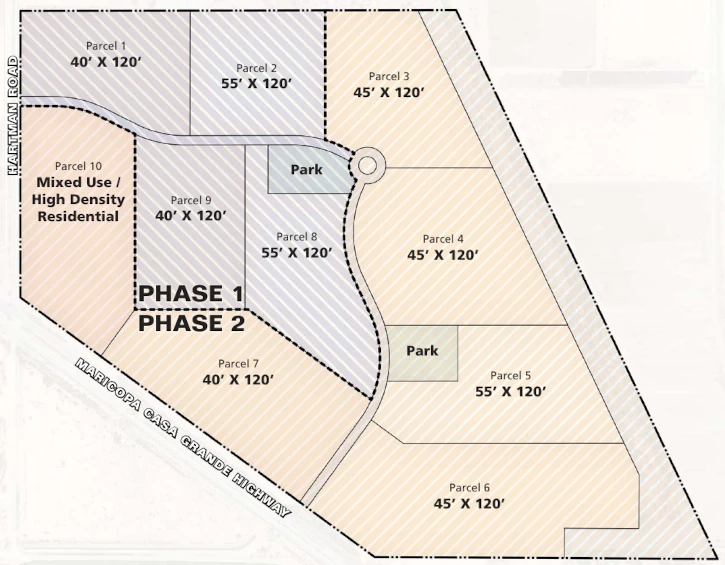
The commission’s first vote resulted in a 3-3 tie, with Chairman James Singleton, Vice Chair Alfonso Juarez III, and Commissioner Bill Robertson voting in favor. Commissioners Robert Brems, Ted Yocum, and Robert Klob voted against the proposal. Commissioner Maurice Thomas was not present for the meeting.
Following the tie vote, Commissioner Klob requested an executive session to discuss potential stipulations for secondary access. After returning from the closed session, Commissioner Robertson made a motion to approve, which Vice Chair Juarez seconded. The final motion passed with no opposition recorded.
Safety Concerns Prompt June Continuation
The commission had tabled the project on June 9, 2025, due to concerns about the development’s emergency access plan. Commissioner Robertson explained the reasoning: “This was continued last time due to questions about the access road, the all-weather emergency road. And it was generally requested if there’s a possibility for the road to be completed as part of phase one, because phase one may develop and have occupants, residents living in it before the other phases complete. And you don’t have the secondary access.”
The development proposes primary access through North Hartman Road, with a secondary all-weather emergency access road connecting to Maricopa-Casa Grande Highway. This emergency access would meet fire code standards using compacted materials like decomposed granite capable of withstanding 75,000 pounds, rather than full pavement, during Phase One development.
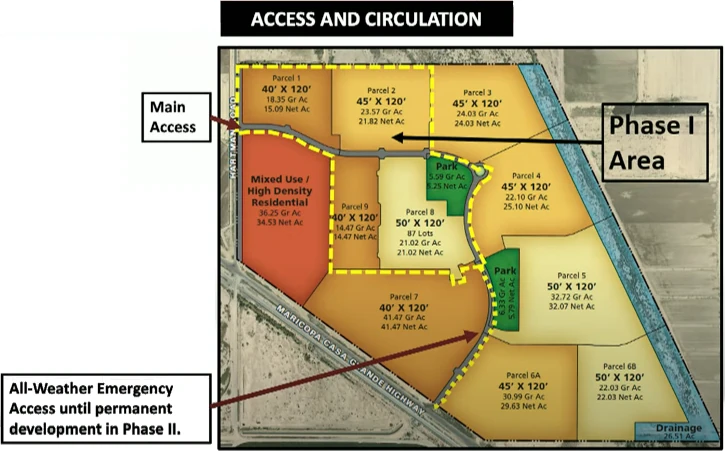
Zombie Development and Entrapment Risks
Commissioner Klob raised concerns about potential economic downturns affecting the project’s completion and resident safety, citing recent industry discussions. “Last week in Washington DC, the National Association of Home Builders had their spring conference. Lot of builders got together talking to legislators, senators, so on. And in the meetings a lot of builders are pushing back with fears of a recession coming,” Klob said.
He emphasized the current economic climate: “We’re closer now than we probably have been in 15 years to another recession, and maybe even more so than COVID.”
He referenced lessons from previous economic crashes: “Our community knows better than most what can happen in a recession.” He explained: “With the builder or an arbitrary LLC that’s in charge of this temporary road, if we do go into recession, they walk away, this becomes a zombie developments, like so many occurred in 2008-2010.”
Klob worried about residents becoming trapped: “Now these people, these 339 homes have no access. The city has no way to force the issue to create a safety access for it, because it’s owned and maintained and operated by the builder. It’s not maintained by the city. We lose any control that we have. And then, theoretically, it could come back to the city as an expense to provide this access”
The commissioner illustrated potential access problems with real examples: “We have an accident. We have a main water line break on Hartman Road, how do these people get to work?”
He pointed to past transportation bottlenecks: “I look at some of the challenges just when we built the bridge on Porter and some of the challenges that occurred in Santa Rosa Springs with their single access. The train would come, they couldn’t go south because the bridge was being built. They couldn’t go north because the train was there, and these people were just stuck.”
City Engineer’s Response and Cost Analysis
City Engineer Eduardo Raudales addressed the commission’s concerns by explaining the financial implications of completing the emergency access road during Phase One. “The prices of homes have skyrocketed in the last five to ten years. So developers, along with the city are trying to find ways to reduce those costs,” Raudales said.
He detailed the substantial costs involved: “There’s an irrigation canal along the Maricopa Casa Grande Highway. And the rule of thumb is that if you touch any of that easement, you have to underground the whole area, which is half a mile. And incurring costs is around $3.5 million a mile. So this will be around $1.8 million just to underground that, and you still don’t have any improvements there. Additionally, the road should be around $2 million.”
Raudales calculated the per-home impact: “Divided by the 300-something lots, then you’re going to be talking about $12,000 to $10,000 per rooftop for that road.”
The engineer cited precedent for the emergency access approach: “The city has done this a couple times. Once in Sorrento, we built a road there that functions as a secondary access until all the improvements are made. It’s pretty standard that if we don’t have the rooftops that we need to build a collector, and we have the possibility to keep it as an emergency access, then we do it, so that the homes at the end are more affordable.”
Addressing Maintenance and Control Concerns
Raudales addressed Commissioner Klob’s concerns about developer abandonment by explaining the maintenance structure. “One of the things that we’re doing with this road is that we’re not putting it on the builder, we’re putting it on the HOA, which is the Homeowners Association, that will have to maintain that one, not the builder. ‘Cause like you said, builders can walk away to look for greener pastures.”
He outlined the city’s enforcement mechanisms: “If the HOA doesn’t do it, then we have a mechanism to step in and give maintenance to the road and, of course, charge the HOA for that amount.”
When Commissioner Klob asked about HOA transfer timing, Raudales clarified: “The builder is part of the HOA. It’s not the HOA itself… on this one, the HOA is not just the builder, it’s also the owners of each of the homes.”
Comparison to Existing Developments
Raudales compared the proposal to existing Maricopa developments: “One example of a community that had to live with a recession without a secondary access that is paved and fully developed is Tortosa North. And so far, they didn’t have many problems. Like, I cannot go to my house because there’s an accident on that road.”
He emphasized the rarity of emergency access usage: “We have secondary access all around the city that we have never used in five years.” He also added: “We might use that road once every two or three years.”
Commission Discussion and Resolution
Vice Chair Juarez supported the staff recommendation: “They do have a primary access and they do have a secondary emergency access. And I think that’s fine for right now, and as you mentioned, we have used that type of strategy in other projects. And if it works in other projects, I don’t see a reason why it cannot work here.”
Commissioner Robertson expressed acceptance of the proposal with conditions: “I think it’s doable. I think there’s some answers here. Typically, emergency access around town, it says, ‘Fire access.’ This can’t be designated only by fire, and they can’t have the only key.”
He emphasized the need for broader access control: “The examples that Commissioner Klob gave us that a water main break, a gas leak or something out there on Hartman, somebody needs to be in charge to be able to open that gate for that purpose. It may not be a fire in the community. It may not be for the fire department to get in, but for the people to get to work.”
Staff Research Request
Following the approval, Chairman Singleton requested staff research on emergency access practices: “I would like to ask staff to look into what other cities do in regards to secondary access and report back on that.”
Planning and Zoning Manager Rick Williams agreed to provide the research by the commission’s only August meeting on August 11th.
Future Development Timeline
The approval requires the developer to submit final plat applications within 24 months and allows them to proceed with construction planning. The preliminary plat approval is effective for two years and may be extended one time only for an additional two years upon reapplication and code compliance verification.
The broader Sanctuary master-planned community envisions up to 1,191 residential units across multiple phases. Future phases will complete the collector roadway connection to Maricopa-Casa Grande Highway and develop the permanent secondary access that addresses the commission’s long-term connectivity concerns.
